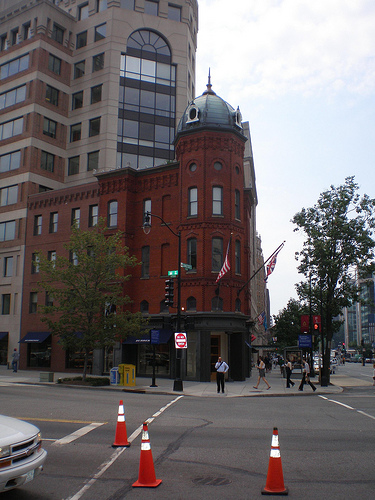On this street in Washington, D.C., old and new stand harmoniously side by side.Photo: Dave ReidA great neighborhood improves over time, like a stew simmering in its spices. New homes or businesses fill in the odd left-over spaces or selectively replace those that have reached the end of their lifespan. The existing homes are added to, tweaked, redesigned, taken away from, and variously molded by the individual personalities of the people living in them. Trees mature, shrubs fill out. The neighborhood achieves a quality we can’t quite put our finger on. So we call it character, almost as if it belongs to a living person. It’s simply impossible to replicate this with a development built from whole cloth.
Jane Jacobs celebrated mixing the old and the new together, so much so that she considered it one of only four principles of good urban form. If a neighborhood is all old buildings, it’s either a staid museum piece for tourists or a victim of severe economic disinvestment. If a neighborhood is all new buildings, something else is lost. Families with less money are priced out by the costs of new construction, and so are the innovative new ventures that cit... Read more



